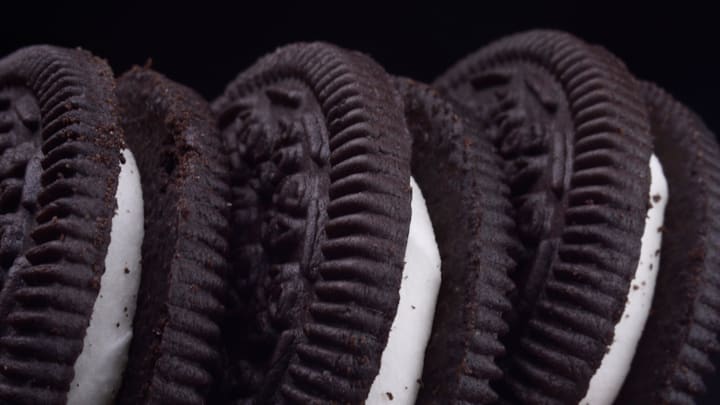The Oreo cookie, which was introduced in 1912, has long been a source of intrigue, from the meaning of its surprisingly elaborate wafer design to the optimal dunk time. There have probably been millions of attempts to split the cookie evenly, with an equal amount of crème filling on both sides.
According to cookie science, this is all but impossible.
As Food & Wine reports, in a 2022 paper published in Physics of Fluids, researchers at the Massachusetts Institute of Technology (MIT) took a closer look at manual manipulation of the Oreo and whether any one specific twisting technique could produce the ideal division of ingredients. (As most know, the classic Oreo consists of two chocolate wafers sandwiching vanilla crème filling.) While seemingly frivolous, the study falls under rheology, or how non-Newtonian material flows when subjected to outside forces.
In order to pursue an answer, a 3D-printed device dubbed the “Oreometer” was created that could repeat multiple ways of separating the wafers. The crème “behaves” differently depending on how one approaches the counter-rotation of the cookies. It was possible, researchers believed, that one method could potentially result in an even amount of the filling left on each newly-single wafer.
But this was not to be—at least, not in the way you might like. Trying all conceivable twisting configurations as well as different varieties of Oreos to achieve what the paper describes as “postmortem crème distribution,” none resulted in the crème being split in half so it was distributed across the surface of each wafer. At best, the crème separated into a half-moon shape on each, resulting in a wafer that was half-bare.
The paper indicates that a possible reason for this phenomenon is in how the Oreo is manufactured: The filling is applied to the bottom wafer, then topped off with a second wafer. Because the filling makes surface contact with the bottom for a moment longer, it tends to adhere more tightly to it, making any kind of equal distribution unlikely. Achieving the half-moon result tends to happen with Oreos that are older.
If manufacturer Nabisco wanted more equitable crème separation, the paper speculates that adding more texture to the wafer could help.
The MIT team was also able to gauge the amount of torque needed to twist an Oreo apart. It’s roughly the same needed to turn a doorknob.
[h/t Food & Wine]
